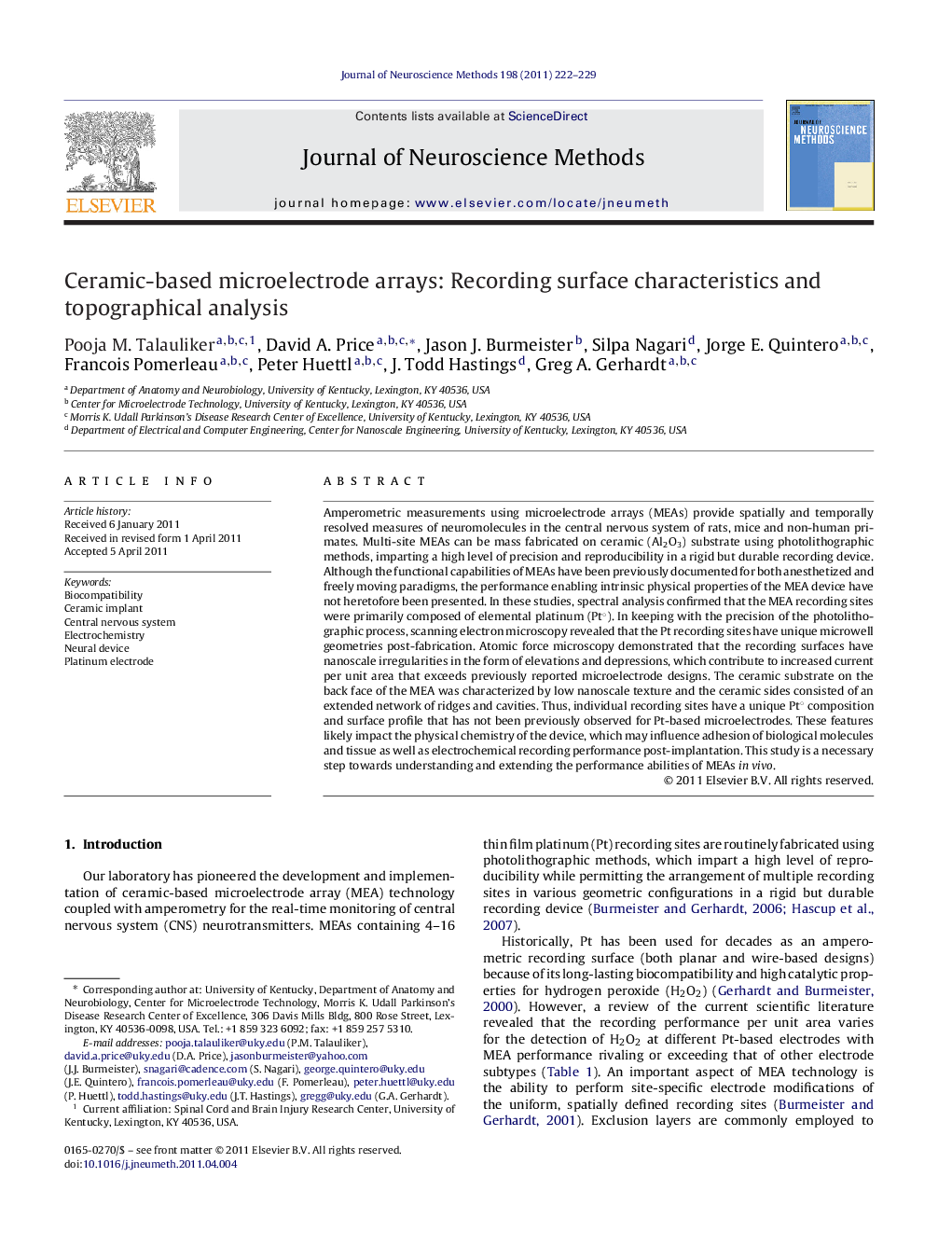| Article ID | Journal | Published Year | Pages | File Type |
|---|---|---|---|---|
| 4335445 | Journal of Neuroscience Methods | 2011 | 8 Pages |
Amperometric measurements using microelectrode arrays (MEAs) provide spatially and temporally resolved measures of neuromolecules in the central nervous system of rats, mice and non-human primates. Multi-site MEAs can be mass fabricated on ceramic (Al2O3) substrate using photolithographic methods, imparting a high level of precision and reproducibility in a rigid but durable recording device. Although the functional capabilities of MEAs have been previously documented for both anesthetized and freely moving paradigms, the performance enabling intrinsic physical properties of the MEA device have not heretofore been presented. In these studies, spectral analysis confirmed that the MEA recording sites were primarily composed of elemental platinum (Pt°). In keeping with the precision of the photolithographic process, scanning electron microscopy revealed that the Pt recording sites have unique microwell geometries post-fabrication. Atomic force microscopy demonstrated that the recording surfaces have nanoscale irregularities in the form of elevations and depressions, which contribute to increased current per unit area that exceeds previously reported microelectrode designs. The ceramic substrate on the back face of the MEA was characterized by low nanoscale texture and the ceramic sides consisted of an extended network of ridges and cavities. Thus, individual recording sites have a unique Pt° composition and surface profile that has not been previously observed for Pt-based microelectrodes. These features likely impact the physical chemistry of the device, which may influence adhesion of biological molecules and tissue as well as electrochemical recording performance post-implantation. This study is a necessary step towards understanding and extending the performance abilities of MEAs in vivo.
► The physical properties of an implantable, ceramic neural device are described. ► Microelectrode array recording sites are primarily composed of elemental platinum. ► Platinum recording sites sit in a microwell and have nanoscale surface topography. ► The inert ceramic substrate has nanoscale roughness. ► The device's unique physical chemistry likely contributes to in vivo performance.
